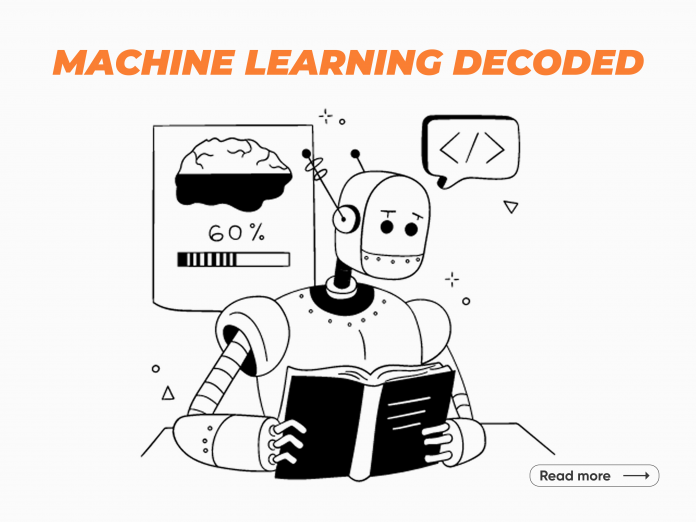In the era of artificial intelligence (AI), Machine Learning (ML) stands out as one of the most transformative technologies, driving innovation across multiple industries. From personalized recommendations on streaming platforms to self-driving cars and predictive analytics in healthcare, ML is reshaping how businesses and individuals engage with technology. But what is machine learning, and why does it hold such significant potential?
Understanding the Power of Machine Learning
Understanding Machine Learning
Machine Learning is a branch of AI that enables computers to learn from data and make decisions without explicit programming. Rather than following rigid, predefined rules, ML models identify patterns in data, enhance their performance over time, and generate accurate predictions. At its core, B.tech in Machine Learning allows machines to mimic human learning processes, adapting and evolving through experience. The continuous improvements in computational power and access to vast amounts of data have significantly accelerated ML advancements.
Types of Machine Learning
Machine Learning is primarily categorized into three types:
Supervised Learning
Supervised learning involves training an ML model on labeled data, where both inputs and expected outputs are predefined. The model continuously refines its ability to map inputs to outputs by minimizing errors. Examples of supervised learning include spam detection, where email providers classify messages as spam or legitimate, and medical diagnostics, where ML models help predict diseases based on patient records.
Some common algorithms used in supervised learning include:
- Linear Regression: Used for predicting continuous values such as housing prices.
- Logistic Regression: Helps in classification tasks like determining if an email is spam or not.
- Support Vector Machines (SVMs): Effective in both classification and regression tasks.
- Neural Networks: Used in deep learning to recognize patterns in complex datasets.
Unsupervised Learning
In unsupervised learning, models analyze unlabeled data to identify patterns and structures without human guidance. This approach is widely used in customer segmentation, where businesses classify consumers based on purchasing behavior, and in anomaly detection, where financial institutions detect fraudulent transactions.
Common unsupervised learning algorithms include:
- K-Means Clustering: Used to segment customers into different groups based on purchasing behavior.
- Hierarchical Clustering: Helps in creating a tree-like structure of data categories.
- Principal Component Analysis (PCA): Reduces the dimensionality of datasets while retaining key information.
Reinforcement Learning
Reinforcement learning enables machines to learn through interaction with their environment, receiving rewards or penalties based on their actions. This approach is prevalent in game-playing AI, such as AlphaGo, which mastered the board game Go, and in robotics, where autonomous machines learn to navigate and perform tasks effectively.
Applications of reinforcement learning include:
- Autonomous Vehicles: Self-driving cars use reinforcement learning for decision-making on the road.
- Robotics: Robots learn optimal ways to interact with their environment and perform specific tasks.
- Finance: AI models optimize trading strategies through reinforcement learning.
Key Applications of Machine Learning
Machine Learning is making a profound impact across various sectors:
- Healthcare: AI-powered diagnostic tools, drug discovery, and personalized treatment plans are transforming patient care by enabling faster and more accurate medical diagnoses. Machine learning helps predict disease outbreaks, identify genetic disorders, and even assist in robotic surgeries.
- Finance: Algorithmic trading, fraud detection, and risk assessment leverage ML models to enhance financial decision-making and security. ML-powered chatbots assist customers in resolving financial queries efficiently.
- Retail and E-Commerce: Businesses optimize operations through recommendation systems, inventory management, and consumer insights, leading to improved customer experiences. Personalized product recommendations based on purchase history have revolutionized e-commerce.
- Automotive Industry: Self-driving cars use ML for object detection, navigation, and real-time decision-making, paving the way for safer and more efficient transportation. Predictive maintenance systems also utilize ML to enhance vehicle longevity.
- Natural Language Processing (NLP): Chatbots, speech recognition, and language translation enhance communication technologies and automate customer support. ML-powered virtual assistants like Siri, Alexa, and Google Assistant improve user experiences.
- Education: ML personalizes learning experiences, helping students grasp concepts at their own pace through adaptive learning platforms. It also assists in grading, plagiarism detection, and student performance analysis.
How Machine Learning Works
The Machine Learning process consists of several key steps:
- Data Collection: Structured or unstructured data is gathered from various sources, including online databases, sensors, and manual inputs.
- Data Preprocessing: The collected data is cleaned and transformed to enhance model accuracy and efficiency. This includes handling missing values, removing duplicate data, and standardizing formats.
- Feature Engineering: Selecting and transforming variables (features) that improve the ML model’s performance.
- Model Training: ML algorithms analyze the data to detect patterns and relationships, learning from historical information.
- Model Evaluation: Performance tests ensure the model’s effectiveness and optimize its parameters for better accuracy.
- Deployment and Monitoring: Once deployed, ML models continue to be refined for improved real-world application and performance. Continuous learning techniques enable the models to adapt to new data.
Challenges in Machine Learning
Despite its potential, ML faces various challenges:
- Data Quality: Inaccurate, biased, or insufficient data can lead to unreliable and unethical models.
- Overfitting and Underfitting: Some models perform well in training but fail to generalize effectively in real-world applications.
- Bias in Algorithms: ML models can reinforce pre-existing biases present in training data, leading to discriminatory outcomes.
- Computational Costs: Training large ML models requires significant resources, making them expensive to develop and maintain.
- Security and Privacy Risks: The increasing reliance on ML raises concerns about data security, privacy breaches, and ethical considerations in AI decision-making.
The Future of Machine Learning
The field of Machine Learning continues to evolve rapidly, with advancements in areas such as:
- Explainable AI (XAI): Improving transparency and interpretability of ML models to enhance trust and accountability.
- Federated Learning: Enhancing privacy by training models on decentralized data, reducing the need for large-scale data transfers.
- General AI: Aiming to create machines with broader, human-like intelligence that can perform a wide range of tasks autonomously.
- AI Ethics and Regulation: Governments and organizations are focusing on ensuring responsible AI development through ethical guidelines and policies.
- Industry-Specific Innovations: ML continues to revolutionize healthcare, finance, agriculture, and other industries, enabling smarter decision-making and automation.
- Quantum Computing and ML: The fusion of ML with quantum computing promises exponential improvements in processing capabilities, opening new frontiers in AI research.
Conclusion
Machine Learning is revolutionizing industries by enabling smarter decision-making, automation, and predictive capabilities. As businesses and researchers push the boundaries of AI, understanding ML fundamentals is increasingly essential. Whether for technology professionals, business leaders, or AI enthusiasts, leveraging ML presents unparalleled opportunities for innovation and transformation. Staying informed about the latest developments in ML can help individuals and organizations harness its full potential while addressing its challenges responsibly.














